Osteoarthritis is a condition that is very common in older cats. Often these animals are not treated properly. The symptoms of osteoarthritis in cats are very difficult to spot, cats do not always visit the vet regularly and the symptoms can even be very subtle. Therefore, there are many cats with osteoarthritis living in pain in the Netherlands. In recent years, many new treatment options have been and are being tested that will allow a cat with osteoarthritis to live years without pain.
What is osteoarthritis in cats?
Osteoarthritis is another word for the wear and tear of the joints. It occurs when the joint becomes damaged. This can be the result of an accident or a developmental disorder. In many cases, the cause of osteoarthritis is not fully known. Osteoarthritis can occur in any joint but is most common in the back, hips, knees, elbows and shoulders. Once the process begins, it will only continue to get worse.
How common is osteoarthritis in cats?
There are many studies being conducted into how common osteoarthritis actually is in cats. It's always very difficult to say because the numbers are often based on cats coming to the vet. Not every cat with osteoarthritis sees a vet. Researchers estimate that between 26 and 90% of all cats over the age of 6 years suffer from osteoarthritis. This wide range of variation is largely due to how the disease is studied. Unless all cats are screened regularly, it is difficult to say how many cats actually have osteoarthritis. In addition, osteoarthritis in cats is difficult to diagnose.
How does osteoarthritis develop in cats?
A joint is a connection between two bones (e.g. the knee, which connects the thigh and lower leg), between these two bones there is a disk containing cartilage and synovial fluid. This cartilage acts as a shock absorber between the bones and synovial fluid keeps everything supple. Several ligaments and a joint capsule hold everything together. The muscles around the joint provide the movement.
As an animal ages, it sometimes happens that the production of new cartilage is disrupted. As a result, the cartilage slowly wears out. As a result, shocks are no longer cushioned as well, which means that the two bone parts are too close together. In many cases, some of the cartilage is preserved and the bones do not directly abut. When the cartilage wears down, the joint becomes less stable. To prevent the cat from damaging the ligaments later, the bone tries to strengthen the joint. It does this by making more bones. This causes the bone to exert pressure in the wrong places. This leads to inflammation in these places.
How do I recognize arthrosis?
What is very striking is that cats with osteoarthritis do not limp. About 4-17% of cats with osteoarthritis are also lame. This makes it very difficult for you, the owner, to recognize that your cat is in pain. In fact, this is one of the most common signs of osteoarthritis in both humans and dogs.
What is striking in cats with osteoarthritis is the change in behavior. The cats are less active and can't jump as well as they used to. The scratching post is used less and the cat no longer likes to climb the stairs. The cat lies in its basket a lot and also plays less. Other symptoms of osteoarthritis can include less grooming, peeing outside the bowl, being less nice to other cats and even to you.
How Is Osteoarthritis Diagnosed?
The main problem with the diagnosis is that cats often do not have any specific symptoms that indicate osteoarthritis. Examining a cat with osteoarthritis is very difficult. Many cats are stressed when they're at the vet and don't show what's bothering them. Stress also leads to the release of substances that relieve acute pain. Sometimes it's good if you film your cat at home to see how it runs, jumps and so on. An X-ray does not always give a good picture. Sometimes the changes in the photo are very minimal, while your cat is severely suffering from osteoarthritis. Sometimes there is even nothing to be seen in the photo, even though your cat has osteoarthritis. An x-ray can often, but not always, reveal the presence of osteoarthritis.
How is osteoarthritis treated?
Older cat owners often think that their cat is suffering from "age". This is very unfortunate because there are many cats with osteoarthritis who go undetected to the problem. The right treatment can lead to a pain-free life.
In many cases, at least part of the treatment should be weight loss. Many cats are overweight, which puts too much stress on the joints and accelerates the process of osteoarthritis. Your cat's wear and tear from visiting the vet will not diminish. Osteoarthritis is therefore not a curable disease, but there are ways to support your cat.
Methods of treating osteoarthritis in cats
There are many different treatments for osteoarthritis in cats, and new ones are being added all the time. A number of treatments have been scientifically proven to be effective. A number of other treatments are expected to work, but there is no conclusive evidence yet. Every cat is different and the way osteoarthritis develops is different in every cat. As such, there is no one-size-fits-all treatment that applies to every cat and every situation. The treatment of osteoarthritis is tailor-made. The right treatment depends very much on your cat's health and age, but also on your cat's lifestyle and your (financial) possibilities. Discuss the possibilities openly with your veterinarian. Treatment of osteoarthritis can include any of the following therapies or a combination of therapies. This list contains the most common treatments and does not claim to be complete. Therefore, always discuss with your veterinarian what to expect from any treatment.
Falling off
For all animals, weight is the number one priority when it comes to treating osteoarthritis. The fatter an animal is, the more stress is placed on the joints. In addition, it is more difficult for (too) fat animals to move around. Losing weight in your cat should always be done under the supervision of a veterinarian. Cats are at high risk of fatty liver disease if they lose weight too quickly. Losing weight to a cat can be a frustrating task, especially for a cat that goes outside. Many cats eat at the neighbors' or catch their own food. The best way to encourage your cat to lose weight is with special food that contains a lot of fibre. Digesting fiber requires a relatively large amount of energy (compared to, for example, digesting meat) and fiber also makes you feel full. Discuss the possibilities with your veterinarian.
Power supply
In addition to food that helps your cat lose weight, there is also food that contains important nutrients for the joints. You can find this in our webshop under special food for cats. It is always important to weigh up what will benefit your cat the most. The two foods are not always compatible, so sometimes a supportive food is chosen and sometimes a food that helps your cat lose weight.
Movement
Exercise is also very important with osteoarthritis. On the one hand, this is important because it contributes to weight control. On the other hand, movement is important to keep the joints flexible.
With dogs it is quite easy to get your animal to move in a controlled manner, but with cats it is very difficult. Osteoarthritis can make it difficult for many cats to groom themselves, go to the litter box, or climb anything. This will make your cat very unhappy.
Your cat will benefit greatly from adapting the living environment. Make sure your cat doesn't have to jump anymore, for example using stairs, corridors and steps. Cats like to sit up high, so keep that in mind!
With an arthrosis cat, it is often not well received to adopt a new cat as a playmate. The new cat is often young and busy and wants to play, while your cat with osteoarthritis prefers to move as little as possible.
You can stimulate your cat's movement by placing food and drink in several places, but also by changing these places regularly. Cats like to be challenged, so toys that contain food also work well to encourage exercise. Playing with your cat for a few minutes two to five times a day is recommended to encourage more exercise.
Horizontal scratching posts are a solution for cats with osteoarthritis. Low step litter boxes and extra large litter boxes (to make it easier for your cat to turn around in the litter box) are also a solution.
When it comes to grooming your cat's coat, you can help your cat when she can no longer do it herself.
In our webshop we have everything you need for your cat; Toys, litter boxes, fur brushes. Be sure to stop by here!
Medication
A veterinarian can recommend medication as part of osteoarthritis treatment. Drugs reduce inflammation in the joint and have a pain-relieving effect. Drugs take effect relatively quickly and will make your cat feel better fairly quickly. This makes it an ideal entry-level treatment. After starting medication, it is often decided to continue searching for the therapy that will have the greatest effect on your cat. Always discuss the pros and cons of this drug with your vet so you know what to look out for!
Additions
Dietary supplements can have a supportive effect on osteoarthritis. Dietary supplements often consist of substances that are important components of the joints; cartilage or synovial fluid. Consider dietary supplements that contain glucosamine or condroitin. Unfortunately, there is no conclusive evidence that supplements work, but many pet owners have had positive experiences with them. The use of dietary supplements is often financially more attractive than the use of (sole) medication. Dietary supplements, alone or in combination with medications, can be an important part of treatment. If you are unsure whether a dietary supplement is appropriate for treatment, you can always discuss this with your veterinarian.
Physical therapy
Physical therapy is also easier to perform on dogs than on cats. Nevertheless, there are many animal physiotherapists who can also treat cats well. We recommend that you always consult a physiotherapist who is affiliated with the Association of Animal Physiotherapists. This way you can be sure that your therapist knows what he is doing. Also, ask your veterinarian for the contact details of an animal physiotherapist in your area. In many cases, you will be given simple exercises that you can do with your cat at home. Many of these exercises are based on stimulating your cat's natural "play" and "hunt" behaviors
Operation
It is possible to operate on a cat with osteoarthritis, but this often has more negative than positive effects. They do not solve the problem because the cartilage is irreparably damaged. Therefore, this is often not recommended. In some cases, surgery can actually be beneficial for a cat. If a vet recommends surgery as a treatment, they will carefully weigh and discuss all the pros and cons.
Other treatment methods
As mentioned earlier, there are many more options than those mentioned here. Always discuss the pros and cons of any therapy with your veterinarian before beginning it.
This text was translated with a translation machine
 Horse Pharmacy
Horse Pharmacy Rugs
Rugs Care
Care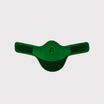 Saddle and Attachments
Saddle and Attachments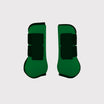 Leg Protection
Leg Protection Bridles
Bridles Feed
Feed Fly Masks
Fly Masks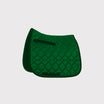 Saddle Pads
Saddle Pads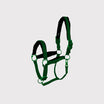 Headcollars and Ropes
Headcollars and Ropes Bits
Bits Other Disciplines
Other Disciplines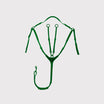 Reins and Auxiliary Reins
Reins and Auxiliary Reins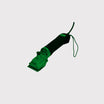 Clipping
Clipping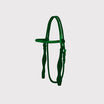 Western
Western Eventing
Eventing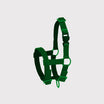 Foals
Foals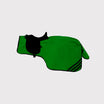 Reflection
Reflection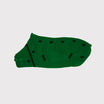 Therapy Products
Therapy Products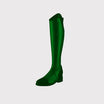 Boots and Shoes
Boots and Shoes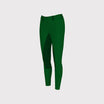 Breeches and Belts
Breeches and Belts Tops
Tops Safety
Safety Competition
Competition Heated Clothing
Heated Clothing Gloves
Gloves Socks
Socks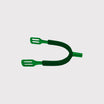 Spurs and Attachments
Spurs and Attachments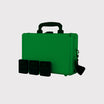 Technology
Technology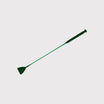 Whips
Whips Gifts
Gifts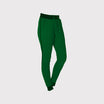 Casual Wear
Casual Wear Underwear
Underwear Rider Pharmacy
Rider Pharmacy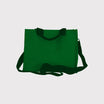 Bags
Bags Books
Books Laundry supplies
Laundry supplies Jewelry
Jewelry Feed and Waterbowls
Feed and Waterbowls Equipment
Equipment Tack Room
Tack Room Pest Control
Pest Control Arena
Arena Horse Toys
Horse Toys Wheelbarrows
Wheelbarrows Yard
Yard Surveillance
Surveillance Disinfect
Disinfect Washing Area
Washing Area Lighting
Lighting Horse Pasture
Horse Pasture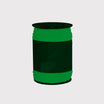 Current Conductors
Current Conductors Pole
Pole Insulators
Insulators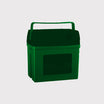 Energisers
Energisers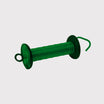 Gate Handles
Gate Handles Batteries and Accumulator
Batteries and Accumulator Nets
Nets Grounding
Grounding Tools
Tools Fencing Security
Fencing Security Wolf Defense
Wolf Defense Fencing Sets
Fencing Sets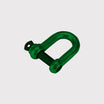 Fence locks
Fence locks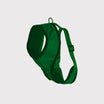 Dogs
Dogs Cats
Cats Rodents
Rodents Dogs Pharmacy
Dogs Pharmacy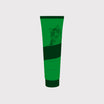 Cats Pharmacy
Cats Pharmacy Rodents Pharmacy
Rodents Pharmacy Cattle Pharmacy
Cattle Pharmacy Poultry Pharmacy
Poultry Pharmacy Veterinary Supplies
Veterinary Supplies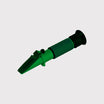 Cattle
Cattle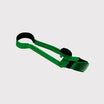 Sheep and Goats
Sheep and Goats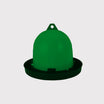 Poultry
Poultry Heat Lamps
Heat Lamps Calves
Calves Marking
Marking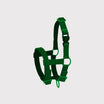 Halters
Halters